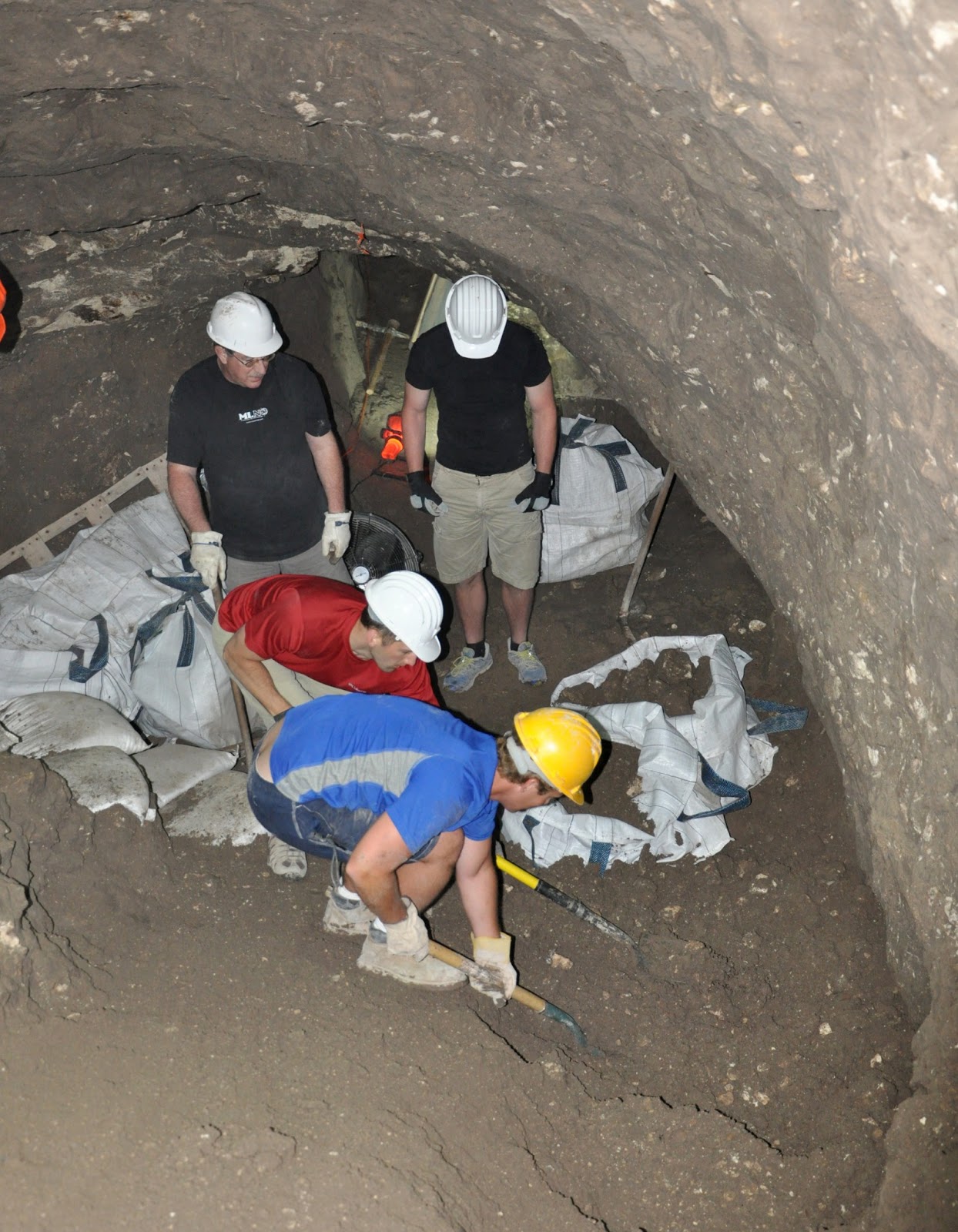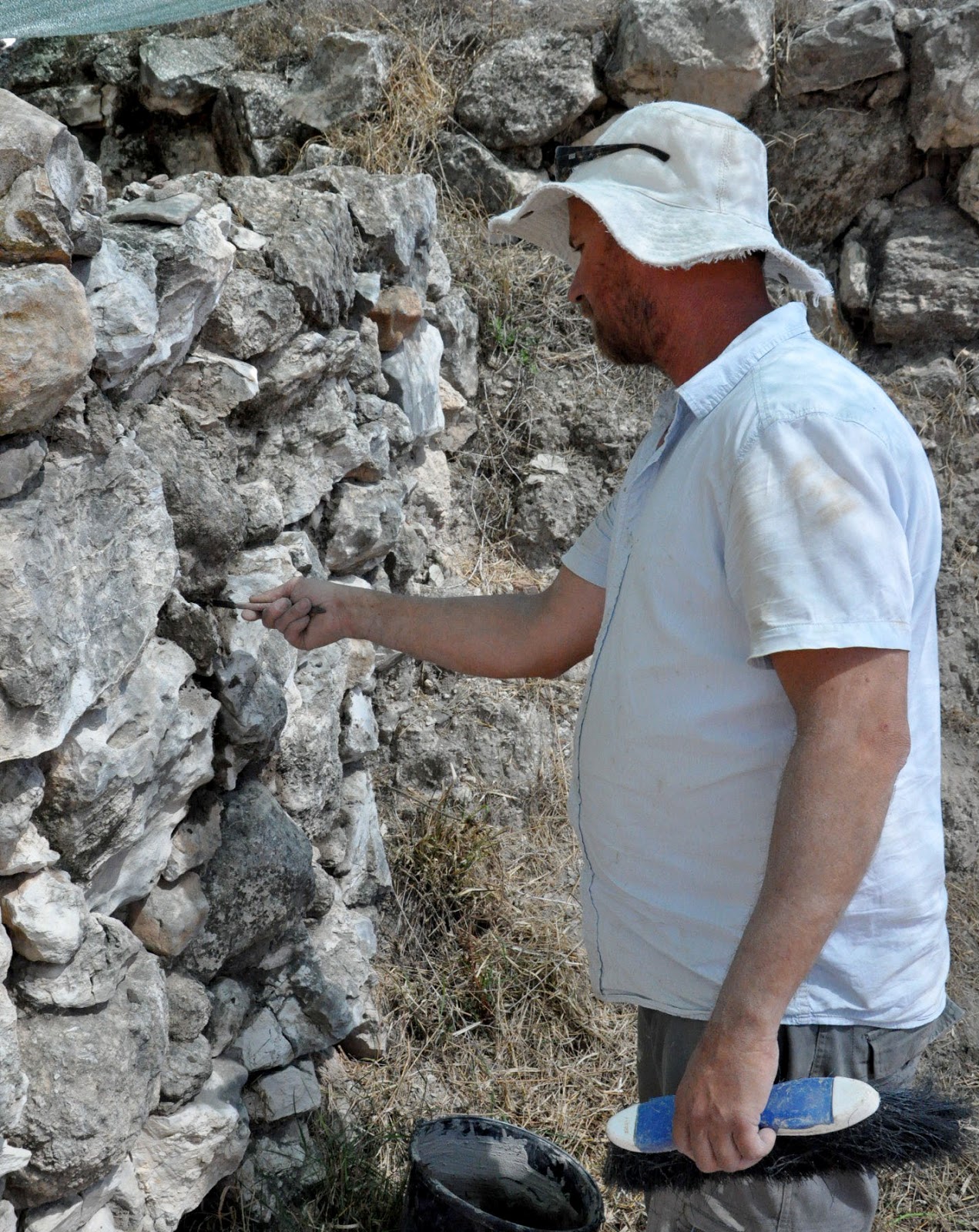The work week closed on a high note this first week of the
Gezer Water System Expedition. May 30 brought an exciting find.
Shortly before lunch. The workers at the bottom of the tunnel
found the elusive last step. Another thrilling discovery. The step was not
clean enough to photograph today. Hopefully we will be able to get a good photo early
next week. Once the step is cleaned and photographed, the team will begin
removing the causeway of stone laid by MacAlister. The dig leaders hope to find
datable material, undisturbed by MacAlister, under those stones. This would be
helpful in establishing a date for the water system.
Breaking through
The team cutting a vertical probe near the southern wall of the cavern made a break through into the open part of the cavern. The team will continue digging as close to the wall as possible in hopes of discovering an exit. May 30 turned out to be a great day on many fronts at the dig site.
The team cutting a vertical probe near the southern wall of the cavern made a break through into the open part of the cavern. The team will continue digging as close to the wall as possible in hopes of discovering an exit. May 30 turned out to be a great day on many fronts at the dig site.
Surprise Visit
At lunch the group received a surprise visit from Mr. Clay Corvin, Vice President for Business Affairs at New Orleans Baptist Theological Seminary. Corvin loves the land of Israel and often leads pilgramages visiting biblical sites throughout the country. It was great to see him at Gezer.
At lunch the group received a surprise visit from Mr. Clay Corvin, Vice President for Business Affairs at New Orleans Baptist Theological Seminary. Corvin loves the land of Israel and often leads pilgramages visiting biblical sites throughout the country. It was great to see him at Gezer.
Housekeeping Items
The plan is to upload select first week’s photos over the weekend. Our work week will begin June 2. Look for a new blog on June 2.
The plan is to upload select first week’s photos over the weekend. Our work week will begin June 2. Look for a new blog on June 2.




